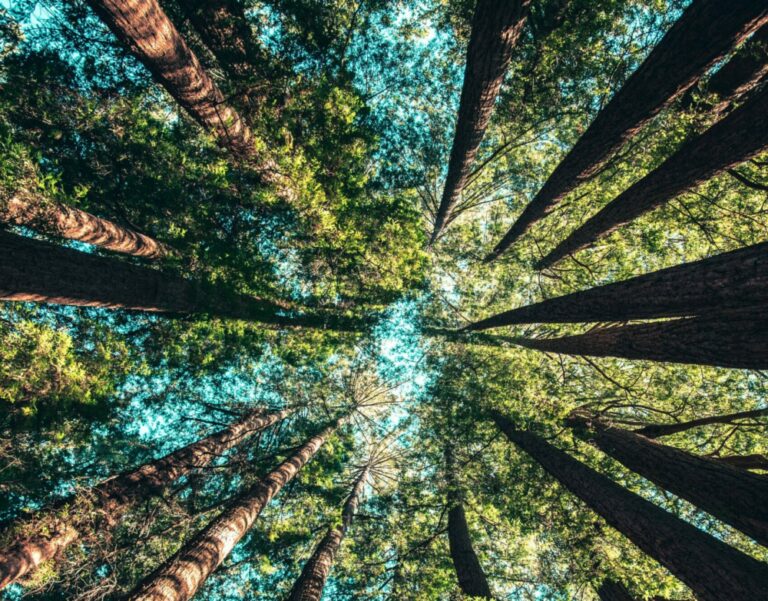What is biodiversity and why does it matter?

What do we mean by biodiversity?
From genes to the giant sequoias, and from tiny E.coli to entire ecosystems, biodiversity refers to the dizzying variety of life on Earth, in all its shapes and sizes, and across different levels of organisation.
Since life on Earth first appeared at least 3.7 billion years ago, it has continued to evolve into ever more complex and diverse forms. This diversity can be observed at different scales: in the genetic variability of a population or in the variety of functions that different species perform in an ecosystem, for example.
One of the most common metrics of biodiversity is the number, or ‘richness’, of the species present. The exact number in existence today is unknown but likely falls between 8 and 14 million (although some estimates go as high as 100 million or even a trillion species). Only about 1.2 million of these have been described by scientists.
The species inhabiting Earth today have not evolved in isolation: they co-evolved, interacting with each other and forming complex networks of ecological associations. Organised into ecosystems, this web of life enables the ecological processes that all life – including humankind – depends on.
An ecosystem comprises all the living organisms and the physical environment that interact together in a particular place. Ecosystems are in a constant state of flux. The key ecological processes that sustain them include interactions between different species, dispersal (the movement of organisms between different areas), and natural disturbance. Indeed, ecosystems become adapted to commonly occurring disturbances, like flooding in river floodplains or fires in savannahs. For example, some fire-adapted plants need fire to burn their seeds before they can sprout. The species composition within ecosystems and globally also changes naturally, with some species being born and others dying out all the time, at a low background rate.
Problems begin when ecosystems are put under too much extra pressure by humans, for instance due to urbanisation, overharvesting or climate change. When this happens, key species or functional groups like corals or pollinators may decline so drastically that they cannot sustain their function anymore. In such cases, cascading effects may reverberate throughout the whole ecosystem, sometimes to the point of causing ecosystem collapse.
Why does biodiversity matter to humans?
Many people argue that nature is worth protecting for its own sake and for the sake of relationships we hold with it. However, biodiversity is also essential for human existence and wellbeing. It has been identified as one of the nine ‘planetary boundaries’ that define the ‘ecological safe space’ in which humanity can continue to exist and thrive.
Collectively, the benefits (but also negative impacts) that humans receive from nature are often termed ‘ecosystem services’, or ‘nature’s contributions to people’. It is worth noting, however, that both concepts have been criticised for being too human-centred or human-focused, and should be replaced by a morality based on care for nature. How people value nature and the benefits they derive from it varies with different cultures, world views, knowledge systems or experiences of nature.
All of us rely on nature to provide so-called ‘regulating’ functions such as clean air, water, soil productivity and a stabilising effect on the climate. Natural ecosystems on land and sea are the sole sinks for anthropogenic carbon emissions, sequestering around 60% of global emissions per year.
Nature also constitutes an important foundation for the economy: more than half of global GDP is dependent on nature, across industries as varied as agriculture, construction, tourism and retail. However, biodiversity is especially critical for subsistence livelihoods: more than two billion people directly rely on wild species for income, food or fuel, and around four billion people for their healthcare and medicinal needs. At least 50,000 different wild species are harvested by people across the globe to fulfil these primary needs.
Nature is also the source of many non-material contributions to people. Contact with nature, feeling connected with it and spending time in natural areas contribute to human physical and psychological wellbeing. For many people, nature is also the cornerstone of their spiritual life and traditions. This is especially true of many Indigenous Peoples, who often see the ecosystems and the land they inhabit as integral parts of who they are, inseparable from their culture and identity.
Alarmingly, today biodiversity is in a state of crisis, threatening the survival of many species and ecosystems, and nature’s contributions to people. Initiatives such as the Convention for Biological Diversity and the related ‘2050 Vision for Living in Harmony with Nature’ are some of the key frameworks guiding global efforts to combat biodiversity loss.
This Explainer was written by Katarzyna Mikołajczak.

